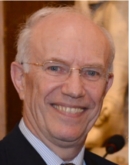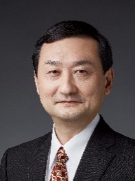讲座题目:Coordination Chemistry, Ligand Design, Metal Clusters and Relevance to Homogeneous Catalysis and Nanomaterials
讲座时间:2023年6月11日(周日)15:00~16:30
讲座地点:工四-202
主讲嘉宾:Prof. Pierre Braunstein
 Pierre Braunstein is Emeritus CNRS Research Director at the University of Strasbourg, where he remained for his whole career, except for one year at University College London (with Profs. Sir R. S. Nyholm and R. J. H. Clark) and another at the TU Munich (with Prof. E. O. Fischer, Nobel Laureate). He is also affiliated with various universities in China: at Qingdao University of Science and Technology, Zhejiang University, Soochow University and Yangzhou University. His broad research interests lie in the inorganic and organometallic chemistry of the transition and main group elements, where he has (co)authored over 630 scientific publications and review articles. Focused on fundamental research, his work has also led to diverse applications, ranging from homogeneous catalysis, to cluster-derived nanoparticles for heterogeneous catalysis and nanosciences. He has given over 500 Plenary, Keynote, and Invited talks at international conferences and diverse institutions. His achievements have been recognized by numerous awards and honors from France, China, Germany, India, Italy, Japan, Portugal, Singapore, Spain, The Netherlands and the United Kingdom. He is a member i.a. of the French Academy of Sciences and the German National Academy of Sciences Leopoldina and, since 2015, is Head of the Division of Chemical Sciences in the European Academy of Sciences.
Pierre Braunstein is Emeritus CNRS Research Director at the University of Strasbourg, where he remained for his whole career, except for one year at University College London (with Profs. Sir R. S. Nyholm and R. J. H. Clark) and another at the TU Munich (with Prof. E. O. Fischer, Nobel Laureate). He is also affiliated with various universities in China: at Qingdao University of Science and Technology, Zhejiang University, Soochow University and Yangzhou University. His broad research interests lie in the inorganic and organometallic chemistry of the transition and main group elements, where he has (co)authored over 630 scientific publications and review articles. Focused on fundamental research, his work has also led to diverse applications, ranging from homogeneous catalysis, to cluster-derived nanoparticles for heterogeneous catalysis and nanosciences. He has given over 500 Plenary, Keynote, and Invited talks at international conferences and diverse institutions. His achievements have been recognized by numerous awards and honors from France, China, Germany, India, Italy, Japan, Portugal, Singapore, Spain, The Netherlands and the United Kingdom. He is a member i.a. of the French Academy of Sciences and the German National Academy of Sciences Leopoldina and, since 2015, is Head of the Division of Chemical Sciences in the European Academy of Sciences.
讲座简介:
The interactions between ligands and metals represent the basis of coordination chemistry, as established by Alfred Werner (Nobel laureate 1913). The design of functional ligands allows the emergence of new molecular properties, in particular hybrid ligands which are characterized by the combination of chemically different donor groups. But more than one metal centre can be involved in the interactions with ligands and the development of homo- and heteropolymetallic metal clusters has opened new perspectives, in terms of metal-metal bonding, catalysis and nanosciences. We will illustrate with a few examples how a better understanding of coordination and organometallic chemistry can lead to novel or significantly improved drugs, homogeneous and heterogeneous catalyst (Green Chemistry) and nanomaterials.
讲座题目:金属有机框架(MOF)材料的催化和能源应用
讲座时间:2023年6月11日(周日)15:00~16:30
讲座地点:工四-202
主讲嘉宾:徐强 南方科技大学讲席教授
 徐强教授是日本工程院院士,印度国家科学院院士,欧洲科学院院士。曾先后任日本国立产业技术综合研究所(AIST)首席研究员,AIST-京都大学能源化学材料开放创新实验室主任,神户大学、京都大学兼职教授。2014-2022年连续入选汤森路透-科睿唯安全球高被引学者,曾获汤森路透研究前沿奖、洪堡研究奖及市村地球环境学术奖等。担任《EnergyChem》主编,《Coord. Chem. Rev.》副主编,《Adv. Energy Mater.》、《Chem》、《Matter》、《Chem. Asian J. 》、《Small Structures》等期刊编委。目前主要致力于金属有机框架(MOF)及衍生物等材料的可控制备及其在(光)电解水制氢、电化学能源存储与转换、气体传感及海水元素提取/分离等领域的应用。
徐强教授是日本工程院院士,印度国家科学院院士,欧洲科学院院士。曾先后任日本国立产业技术综合研究所(AIST)首席研究员,AIST-京都大学能源化学材料开放创新实验室主任,神户大学、京都大学兼职教授。2014-2022年连续入选汤森路透-科睿唯安全球高被引学者,曾获汤森路透研究前沿奖、洪堡研究奖及市村地球环境学术奖等。担任《EnergyChem》主编,《Coord. Chem. Rev.》副主编,《Adv. Energy Mater.》、《Chem》、《Matter》、《Chem. Asian J. 》、《Small Structures》等期刊编委。目前主要致力于金属有机框架(MOF)及衍生物等材料的可控制备及其在(光)电解水制氢、电化学能源存储与转换、气体传感及海水元素提取/分离等领域的应用。
讲座简介:
Recently, we have successfully synthesized a number of porous MOFs and developed their new applications as catalysts, as supports for metal nanoparticles and as templates/precursors for synthesis of nanostructured materials.1 Porous carbons and carbon composite materials have been synthesized by using MOFs as templates/precursors and the resultant materials display high specific surface areas and excellent electrochemical properties as electrode materials for electric double-layered capacitor (EDLC) and as electrocatalysts for various reactions. Nano-MOFs, including super-long single-crystal cobalt-organic framework (Co-MOF) nanotubes and a single-crystal capsular-MOF with openings on the wall, have been synthesized, and their derivatives by carbonization have exhibited excellent activities for electrocatalytic reactions such as oxygen evolution (OER), hydrogen evolution (HER), and oxygen reduction (ORR). “Quasi-MOFs” have been prepared by controlled deligandation of MOFs, which have a transition-state structure between porous MOFs and metal oxides and exhibit dramatically enhanced catalytic performance. This talk will discuss the catalytic and energy applications of MOF-derived nanomaterials.
References:
For recent reviews, see: (a) S. Dang, Q.-L. Zhu, Q. Xu, Nat. Rev. Mater., 2017, 3, 17075. (b) R. Zhao, Z. Liang, R. Zou, Q. Xu, Joule, 2018, 2, 2235. (c) Z. Liang, R. Zhao, T. Qiu, R. Zou, Q. Xu, EnergyChem, 2019, 1, 100001. (d) Y.-S. Wei, M. Zhang, R. Zou, Q. Xu, Chem. Rev., 2020, 120, 12089.